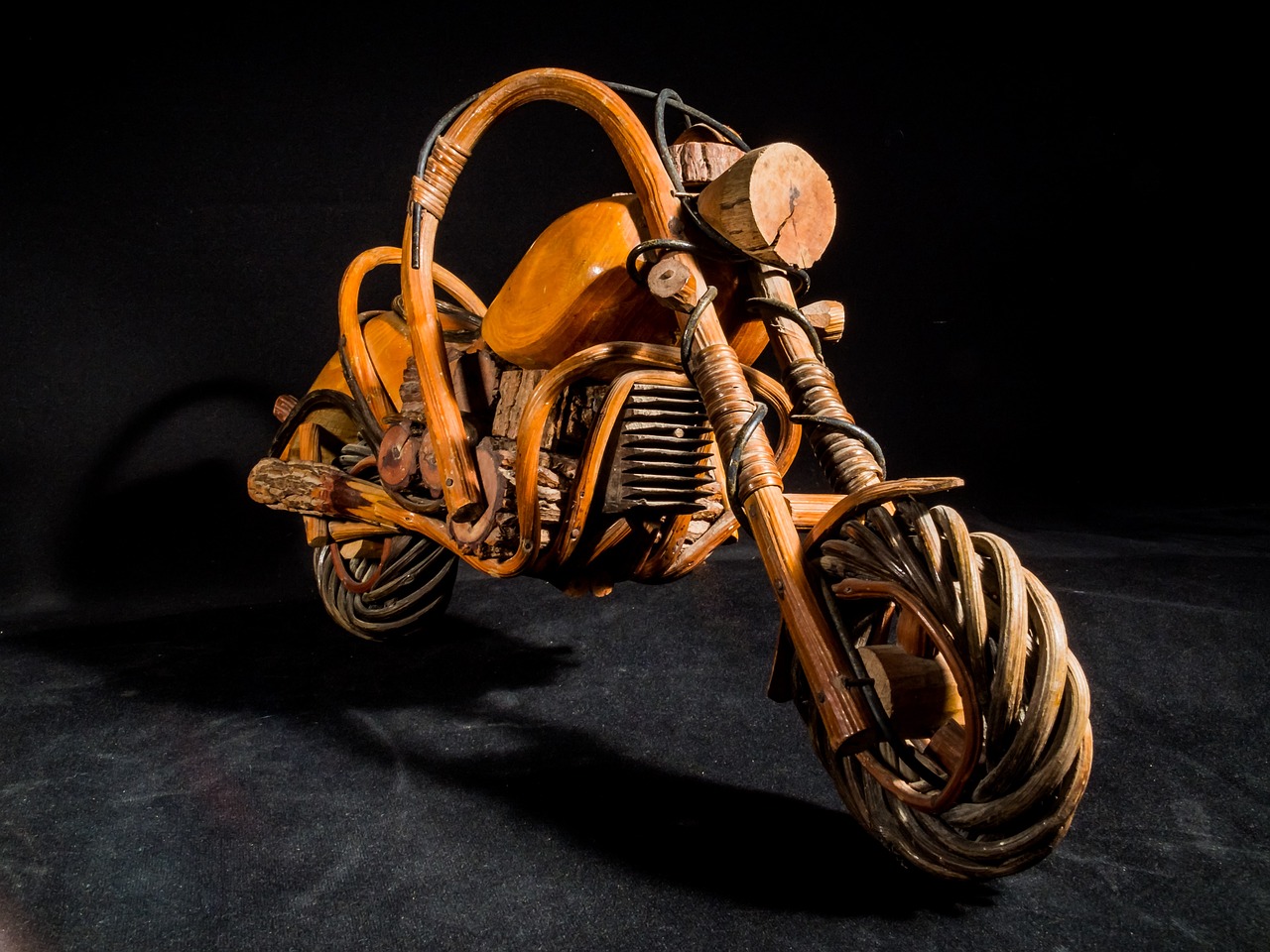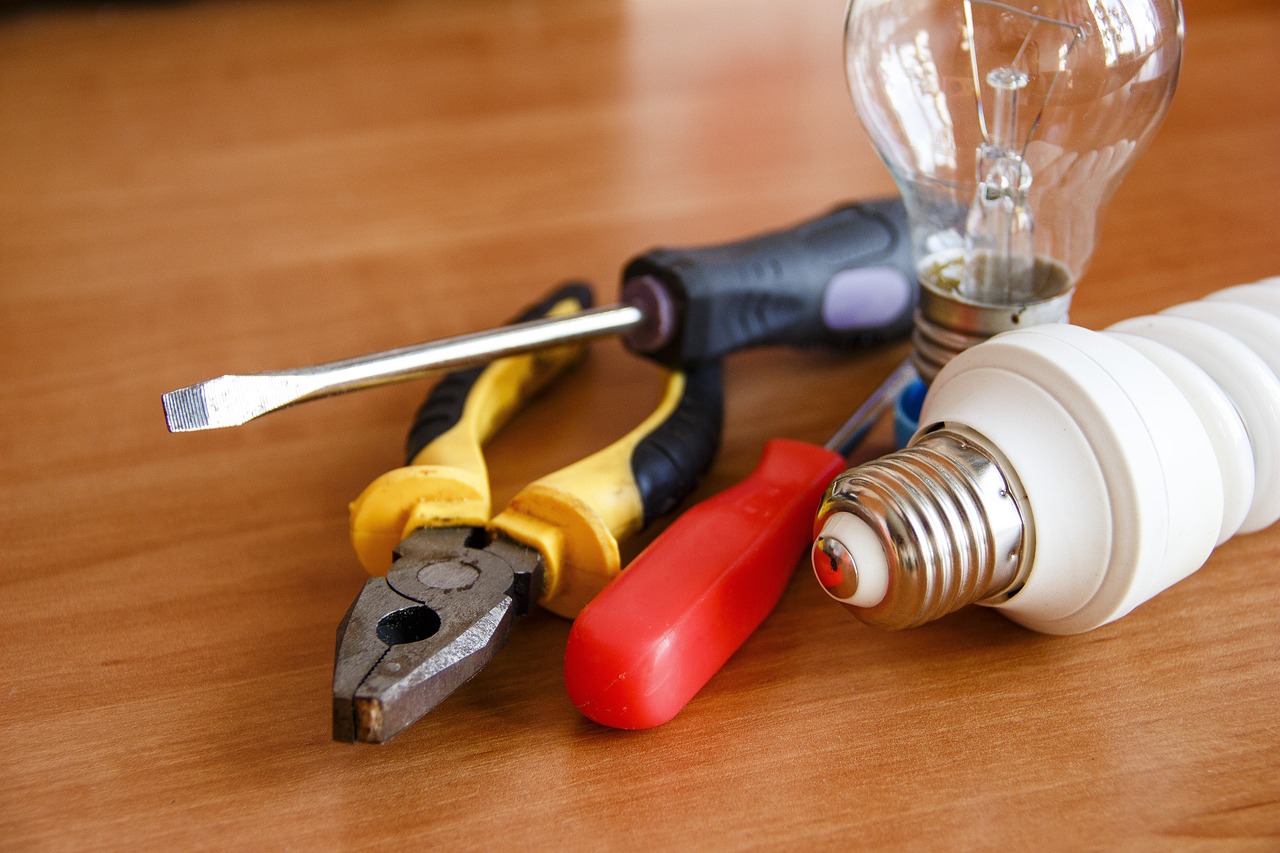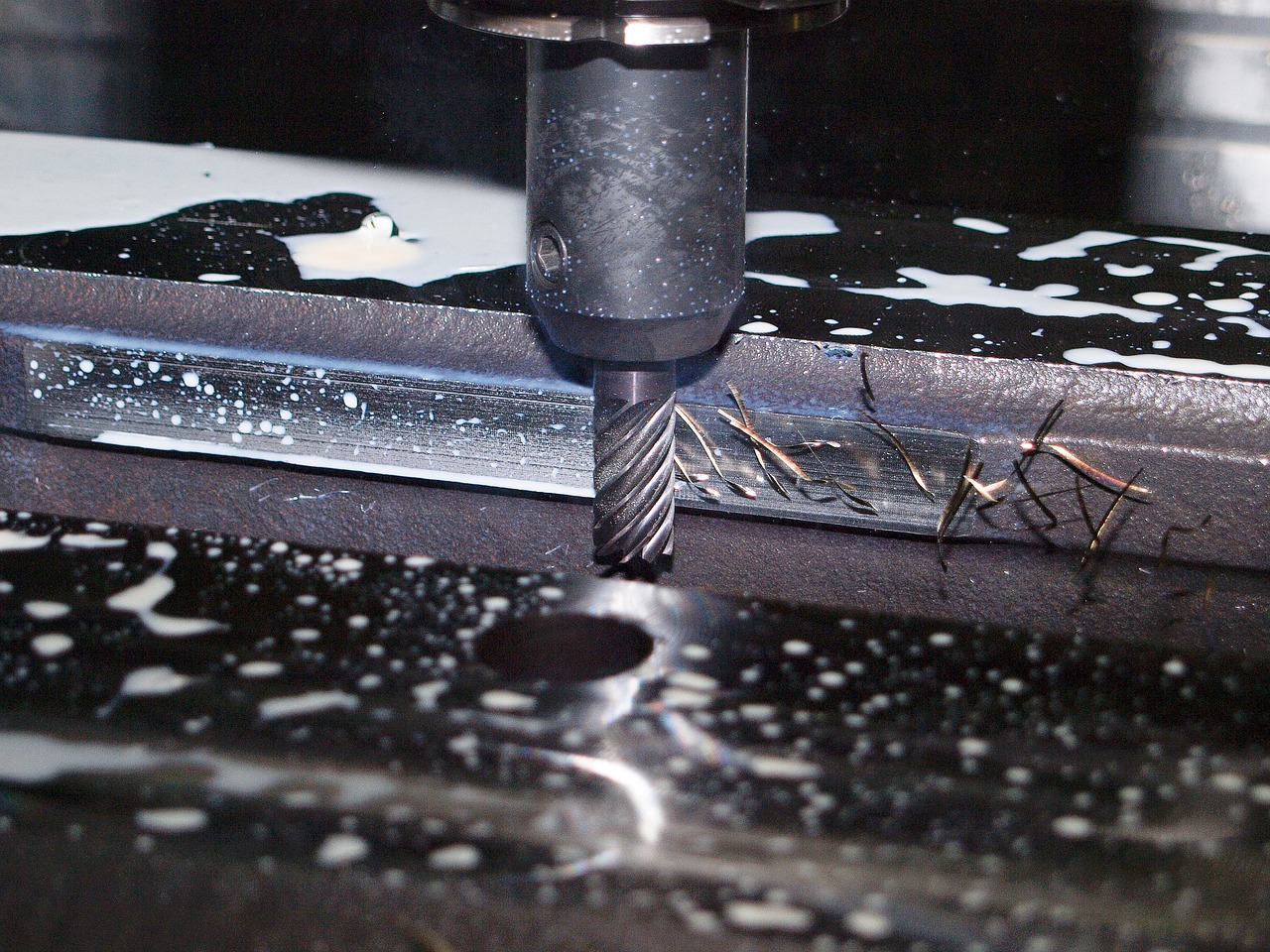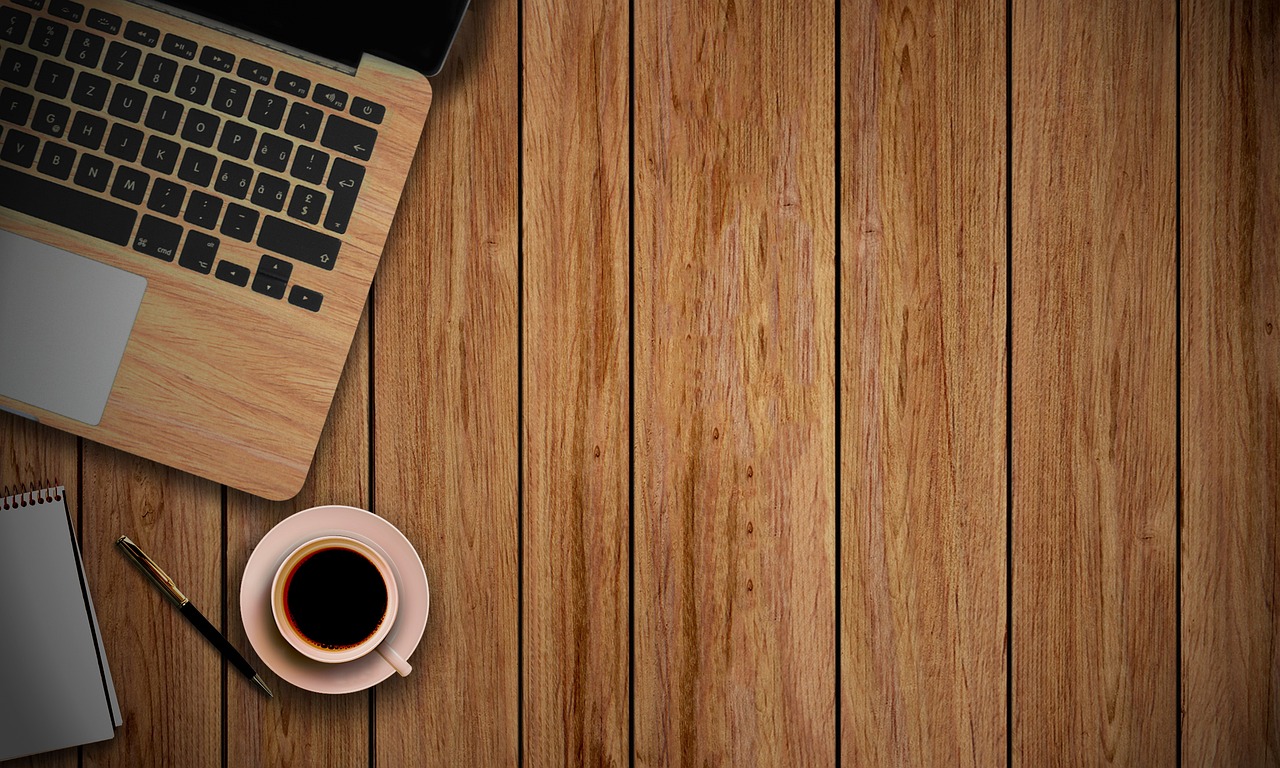Handcrafted Wooden Boxes: A Step-by-Step Process
Creating handcrafted wooden boxes is not just a craft; it's an art form that combines creativity, skill, and a touch of personalization. Whether you're looking to store precious keepsakes, organize your workspace, or create a unique gift, the process of making these boxes is both rewarding and fulfilling. In this article, we will take you through the intricate steps involved in crafting beautiful and functional wooden boxes. From selecting the right materials to applying the finishing touches, each step is essential in ensuring that your handcrafted box not only looks stunning but also stands the test of time.
Imagine the satisfaction of holding a beautifully crafted box in your hands, knowing that you created it from scratch. The journey begins with the selection of the right wood, which is crucial for both durability and aesthetics. The type of wood you choose will influence the overall look and feel of your box, making it essential to understand the characteristics of various wood options. For instance, hardwoods like oak and maple are known for their strength and durability, while softer woods such as pine are easier to work with but may not hold up as well over time. Each type of wood has its own unique grain patterns and colors, providing endless possibilities for your design.
Before diving into the construction phase, it's important to gather all the necessary tools and materials. A well-equipped workspace can make a significant difference in your crafting experience. Basic hand tools such as saws, chisels, and clamps are essential for shaping and assembling your box. Additionally, power tools like routers and sanders can enhance your efficiency, allowing you to achieve professional results with less effort. Quality materials play a vital role in the success of your project; using premium wood and finishes not only ensures longevity but also adds an extra layer of aesthetic appeal to your handcrafted piece.
Once your workspace is set up and your materials are ready, the next step is designing your box. This is where your creativity can truly shine! Begin by sketching out your ideas, considering the size, shape, and any decorative features you want to incorporate. Think of your design as a blueprint; it should clearly outline all dimensions and features to avoid any surprises during construction. Adding decorative elements like carvings or inlays can elevate the visual appeal of your box, allowing for a personal touch that reflects your style.
As you move into the assembly phase, understanding proper techniques is essential for ensuring your box is sturdy and functional. Joinery methods such as dovetails and mortise-and-tenon joints are popular choices among woodworkers due to their strength and stability. These techniques not only enhance the durability of your box but also contribute to its overall aesthetic. Once the assembly is complete, it's time for the finishing touches. Techniques like sanding, staining, and sealing will protect the wood and enhance its natural beauty, making your handcrafted box a true masterpiece.
- What type of wood is best for making boxes? Hardwoods like oak and walnut are great for durability, while softer woods like pine are easier to work with.
- Do I need power tools to make a wooden box? While hand tools can suffice, power tools can significantly speed up the process and improve precision.
- How do I ensure my box lasts a long time? Use high-quality wood, apply proper finishes, and utilize strong joinery techniques.
- Can I customize my box design? Absolutely! Incorporate personal elements such as carvings or unique shapes to make it your own.

Choosing the Right Wood
When it comes to crafting your very own handcrafted wooden boxes, one of the most critical decisions you'll make is . The type of wood you select will not only affect the durability of your box but also its overall aesthetic appeal. Each type of wood comes with its unique characteristics, so understanding these can elevate your project from ordinary to extraordinary.
First off, consider the purpose of your wooden box. Are you creating a simple storage solution, or is it intended as a decorative piece? For functional boxes that will be used frequently, you might want to opt for hardwoods like oak, maple, or cherry. These woods are renowned for their strength and resistance to wear and tear. On the other hand, if your box is primarily for display, you might choose softer woods like pine or cedar, which are easier to work with and can be beautifully stained or painted.
Here’s a quick rundown of some popular wood types and their characteristics:
| Wood Type | Characteristics | Best Use |
|---|---|---|
| Oak | Strong, durable, and has a beautiful grain | Functional boxes, furniture |
| Maple | Hard, fine grain, and resistant to scratches | High-end storage boxes, decorative pieces |
| Cherry | Rich color, smooth texture, and ages beautifully | Elegant, decorative boxes |
| Pine | Soft, lightweight, and easy to work with | Beginner projects, decorative boxes |
| Cedar | Lightweight, aromatic, and resistant to decay | Outdoor storage, jewelry boxes |
While the wood type is essential, it's also crucial to consider the grain pattern and color. A box with a stunning grain pattern can serve as a conversation starter, while the right color can complement your home decor. Don't shy away from experimenting with different finishes, as they can enhance the wood's natural beauty and protect it from damage.
Finally, always remember that quality matters. Investing in high-quality wood may seem costly upfront, but it pays off in the long run. Your handcrafted wooden box will not only look better but will also stand the test of time, becoming a cherished item for years to come. So, when you're at the lumberyard, take a moment to inspect the wood. Look for signs of warping, knots, or discoloration that could compromise your project.
In summary, choosing the right wood is a blend of practicality and artistry. By understanding the characteristics of various wood types and considering your project's purpose, you can select the perfect material for your handcrafted wooden box. Happy crafting!

Tools and Materials Needed
Before diving into the exciting world of crafting handcrafted wooden boxes, it's crucial to gather the right tools and materials. Think of it as gathering your ingredients before cooking a gourmet meal—having everything at your fingertips will make the process smoother and more enjoyable. The tools you choose will not only affect the quality of your work but also your overall experience. So, let’s break down what you’ll need to get started.
First off, you'll require a range of hand tools. These are essential for shaping and assembling your wooden box. A good set of tools can often be the difference between a project that feels like a chore and one that feels like a labor of love. Here’s a quick overview of the basic hand tools you should have:
- Saws: A handsaw or coping saw will allow you to make precise cuts in your wood.
- Chisels: Essential for carving out joints and adding decorative elements.
- Clamps: These are vital for holding pieces together while the glue dries, ensuring a tight fit.
In addition to hand tools, you'll want to consider power tools to speed up your workflow. While hand tools can be incredibly satisfying to use, power tools can save time and effort, especially for larger projects. Some essential power tools include:
Using power tools can significantly enhance efficiency in woodworking. Here are a couple of power tools you might find invaluable:
- Router: Perfect for hollowing out areas in wood, allowing for intricate designs and smooth edges.
- Sander: Essential for achieving that smooth finish that makes your box look professional.
Now, let’s not forget about the materials. The quality of your wood will play a significant role in the durability and aesthetic of your finished product. It’s like choosing the right fabric for a tailored suit; the right choice can make all the difference. Here are some popular wood types you might consider:
| Wood Type | Characteristics | Best For |
|---|---|---|
| Oak | Durable, strong, and has a beautiful grain. | Functional boxes that need to withstand wear. |
| Maple | Hard and resistant to scratches, light in color. | Boxes that require a clean, modern look. |
| Walnut | Rich color and grain, easy to work with. | Decorative boxes that showcase craftsmanship. |
Lastly, consider the finishes you will use. A high-quality stain or sealant not only enhances the wood's natural beauty but also protects it from moisture and wear. It's like putting a protective layer on your favorite book; it keeps it looking new and vibrant for years to come.
In summary, having the right tools and materials is essential for crafting beautiful and functional wooden boxes. From hand tools to power tools, and from quality wood to finishing touches, each element plays a critical role in your woodworking journey. So, gather your supplies and get ready to unleash your creativity!
Q: What is the best wood for beginners?
A: Pine is often recommended for beginners due to its affordability and ease of work.
Q: Do I need power tools to make wooden boxes?
A: While power tools can make the process quicker and easier, they are not strictly necessary. Hand tools can also produce beautiful results.
Q: How can I ensure my box lasts a long time?
A: Using high-quality wood and finishes, along with proper joinery techniques, will help ensure longevity.

Basic Hand Tools
When it comes to crafting beautiful and functional wooden boxes, having the right hand tools is absolutely essential. Think of these tools as your trusty sidekicks in the woodworking adventure. Each tool plays a unique role, helping you to shape, cut, and assemble your masterpiece. Let's dive into some of the fundamental hand tools that every woodworker should have in their arsenal.
First and foremost, a good quality saw is a must-have. Whether you opt for a hand saw or a more specialized tool like a coping saw, this tool will be your primary means of cutting wood to size. It's like the sculptor's chisel, allowing you to transform raw material into something extraordinary. A sharp blade makes all the difference, so keep it well-maintained!
Next up, we have chisels. These are perfect for carving out joints or adding decorative elements to your box. A set of chisels in various sizes will give you the flexibility to tackle different tasks. Imagine them as the paintbrushes in your toolkit, allowing you to add intricate details that truly personalize your creation. Remember to keep your chisels sharp; a dull chisel can be more dangerous than a sharp one, as it requires more force to use.
Another essential tool is the clamp. Think of clamps as your extra set of hands. They hold pieces together while the glue dries or while you work on assembly. Without clamps, you might find yourself juggling pieces, which can lead to frustration and errors. A good assortment of clamps, including bar clamps and corner clamps, will ensure that your joints are tight and your box is sturdy.
Don’t forget about the hand plane. This tool allows you to smooth out surfaces and create a perfect fit between pieces. It’s like giving your wood a spa treatment, ensuring that it looks and feels just right. A well-tuned hand plane can make all the difference in achieving that professional finish.
Lastly, a reliable measuring tape and a square are indispensable. Accurate measurements are crucial in woodworking, and these tools help ensure that everything is cut and assembled correctly. A square helps you check for right angles, making sure that your box is not only beautiful but also structurally sound. Think of these tools as your blueprint, guiding you through the process.
In summary, having the right basic hand tools will set you up for success in your woodworking projects. Each tool serves a specific purpose, and together they create a harmonious workflow. So, gather your tools, and let your creativity flow as you embark on your journey of crafting handcrafted wooden boxes!
- What is the best type of wood for beginners? Softwoods like pine are often recommended for beginners due to their ease of cutting and shaping.
- How do I maintain my hand tools? Regular cleaning, sharpening, and proper storage will help extend the life of your tools.
- Can I use power tools instead of hand tools? Yes, but hand tools offer a level of control and precision that is often desired in fine woodworking.
- What safety gear should I use while woodworking? Always wear safety glasses, ear protection, and a dust mask to protect yourself while working.

Power Tools Overview
When it comes to crafting beautiful and functional handcrafted wooden boxes, power tools can be your best friends. They not only save time but also enhance the precision of your work, making the entire process smoother and more enjoyable. Imagine trying to cut a piece of wood perfectly straight with just a hand saw; it can feel like trying to carve a statue with a butter knife! That's where power tools come into play, giving you the edge you need.
Among the most essential power tools for woodworking, you’ll find:
- Router: This versatile tool is perfect for hollowing out areas of wood, creating decorative edges, and making precise cuts. It allows you to add intricate designs that can transform a simple box into a stunning piece of art.
- Sander: Achieving a smooth finish is crucial, and a sander is a game-changer. Whether you opt for a belt sander for larger surfaces or a detail sander for those tricky corners, this tool will save you hours of sanding by hand.
- Drill: A drill is essential for making holes for screws or dowels, ensuring that your box is securely assembled. With the right bits, you can also create decorative holes that add character to your design.
- Table Saw: If you’re serious about woodworking, a table saw is a worthy investment. It allows for precise cuts and can handle larger pieces of wood with ease, making it a staple in any workshop.
Each of these tools plays a vital role in the box-making process, and knowing how to use them effectively can significantly enhance your craftsmanship. For instance, using a router to create a decorative edge on the lid of your box can elevate its aesthetic appeal, while a sander will ensure that every surface is smooth to the touch, inviting users to explore its beauty.
However, as with any power tool, safety should always be your top priority. Make sure to wear appropriate protective gear, such as goggles and ear protection, and familiarize yourself with the specific safety guidelines for each tool. A little caution goes a long way in preventing accidents and ensuring a fun and productive woodworking experience.
In conclusion, integrating power tools into your woodworking routine can drastically improve your efficiency and the quality of your handcrafted wooden boxes. By choosing the right tools and using them responsibly, you can unlock your full potential as a craftsman and create pieces that are not only functional but also works of art.
Q: What is the best wood for making a handcrafted box?
A: The best wood depends on the intended use of the box. For durability and aesthetics, hardwoods like oak or maple are excellent choices, while softer woods like pine are easier to work with and more affordable.
Q: Do I need power tools to make a wooden box?
A: While you can make a wooden box using only hand tools, power tools can significantly speed up the process and improve precision, making them a worthwhile investment for serious crafters.
Q: How do I ensure my box is sturdy?
A: Using proper joinery techniques, such as dovetail or mortise-and-tenon joints, along with quality materials and assembly methods, will ensure your box is both strong and durable.
Q: What finishing techniques should I use for my box?
A: Sanding, staining, and sealing are essential finishing techniques. Sanding smooths the surface, staining enhances the wood's natural beauty, and sealing protects it from moisture and wear.

Choosing Quality Materials
When it comes to crafting handcrafted wooden boxes, the materials you choose can significantly impact the final product. Selecting high-quality wood is not just about aesthetics; it also plays a crucial role in the durability and functionality of your box. Imagine spending hours of labor and creativity only for your masterpiece to warp or crack over time. To avoid such disappointments, it's essential to understand what makes wood suitable for your specific project.
First and foremost, consider the type of wood. Different species have unique characteristics that affect their performance and appearance. For instance, hardwoods like oak, maple, and walnut are known for their strength and longevity, making them ideal for boxes that will see frequent use. On the other hand, softwoods such as pine and cedar are lighter and easier to work with, but they may not withstand heavy wear and tear as effectively. Therefore, it's essential to align your wood choice with the intended use of the box.
Another crucial factor is the wood's grain and finish. A well-defined grain can add a stunning visual appeal to your box, enhancing its overall beauty. Look for boards that are free from knots and defects, as these can compromise the structural integrity of your project. Additionally, consider the finish you plan to apply. Some woods, like cherry, darken beautifully with age, while others may require staining to achieve the desired look. A good finish not only enhances the appearance but also protects the wood from moisture and wear.
Moreover, don't overlook the importance of sourcing your materials responsibly. Opting for sustainably harvested wood not only contributes to environmental preservation but can also yield higher-quality materials. Many suppliers now offer reclaimed wood, which not only adds character but is also an eco-friendly choice. When you choose quality materials, you're not just investing in a box; you're investing in a piece of art that will last for generations.
In summary, choosing quality materials is a vital step in the box-making process. By selecting the right type of wood, considering the grain and finish, and sourcing responsibly, you set the foundation for a beautiful and functional handcrafted wooden box. Remember, the quality of your materials will reflect in the final product, so take the time to make informed choices that align with your vision.
- What type of wood is best for making a wooden box?
Hardwoods like oak and walnut are excellent choices for durability, while softwoods like pine are easier to work with. - How do I ensure my wood is of high quality?
Look for wood that is free from knots and defects, and consider the grain pattern and finish. - Can I use reclaimed wood for my projects?
Absolutely! Reclaimed wood is not only environmentally friendly, but it also adds unique character to your boxes. - What finishes should I use on my wooden box?
Consider using stains, sealants, or oils that enhance the wood's natural beauty while providing protection.

Preparing Your Workspace
When it comes to woodworking, the importance of a well-organized workspace cannot be overstated. Imagine trying to cook a gourmet meal in a cluttered kitchen; the same principle applies to crafting your handcrafted wooden boxes. A tidy and efficient workspace not only boosts productivity but also enhances safety, allowing you to focus on the art of creation without distractions. To get started, consider the layout of your workspace. Ensure that your tools are easily accessible and that you have ample room to maneuver while working on your projects. This means keeping your workbench clear and having a designated area for cutting, assembling, and finishing your wooden boxes.
Safety should always be a priority in woodworking. Make sure to equip your workspace with the necessary safety gear, such as goggles, ear protection, and dust masks. Additionally, ensure that your workspace is well-ventilated, especially when working with finishes and adhesives that can emit harmful fumes. To further enhance safety, keep a first aid kit handy and familiarize yourself with basic first aid procedures.
Now, let’s talk about organization. A cluttered space can lead to accidents and mistakes, so it’s beneficial to implement a storage system for your tools and materials. Consider using pegboards for hanging tools, labeled bins for screws and fasteners, and shelving units for wood storage. Below is a simple table outlining some essential items to keep in your workspace for a smoother woodworking experience:
| Item | Purpose |
|---|---|
| Workbench | A flat surface for cutting, assembling, and finishing your projects. |
| Tool Storage | Organizes tools for easy access and prevents clutter. |
| Safety Gear | Protects you from injuries while working. |
| Lighting | Ensures you can see details clearly, reducing the risk of mistakes. |
Lastly, consider creating a comfortable environment. Good lighting is essential; natural light is ideal, but if that’s not possible, invest in bright, adjustable work lamps. A comfortable chair or stool can also make a world of difference, especially during long crafting sessions. Remember, a well-prepared workspace is the foundation of any successful woodworking project. By taking the time to set up your area thoughtfully, you’ll find that your creativity flows more freely, and your handcrafted wooden boxes will turn out even better than you imagined.
Q1: What tools do I need to set up my woodworking workspace?
A1: Essential tools include a sturdy workbench, saws, chisels, clamps, and safety gear. Having a well-organized storage system for these tools will also help keep your workspace efficient.
Q2: How can I ensure safety in my woodworking area?
A2: Always wear appropriate safety gear, such as goggles and masks. Maintain good ventilation and keep a first aid kit readily available. Regularly check your tools for safety and functionality.
Q3: What type of lighting is best for woodworking?
A3: Natural light is ideal, but if that’s not feasible, use bright, adjustable LED lamps to illuminate your workspace. Ensure that the lighting minimizes shadows to help you see your work clearly.

Designing Your Box
When it comes to , the possibilities are as vast as your imagination! This is the stage where your creativity truly shines, allowing you to create a piece that is not only functional but also a reflection of your personal style. The design process starts with a few critical elements: size, shape, and decorative features. Each of these components plays a vital role in determining how your box will look and serve its purpose.
First, consider the size of your box. Are you crafting a small keepsake box for treasured items, or perhaps a larger storage box for tools or toys? The intended use will guide your decision, ensuring that the dimensions meet your needs. A good rule of thumb is to sketch out your ideas on paper, giving you a visual reference as you plan your dimensions. Remember, the size can also affect the type of wood you choose, as larger boxes may require sturdier materials.
Next up is the shape. While traditional boxes are rectangular, don't shy away from experimenting with different shapes like squares, circles, or even more complex forms. Unconventional shapes can add a unique flair to your creation, making it stand out. Think of how a round box could serve as a stunning centerpiece on a coffee table, or how a hexagonal box could be a conversation starter at a gathering.
Lastly, let’s talk about decorative features. This is where your personality can really come through! You might want to incorporate intricate carvings, elegant inlays, or even painted designs. These decorative elements not only enhance the visual appeal but can also tell a story or convey a message. For instance, if you’re making a gift for a loved one, consider adding their initials or a meaningful symbol to personalize it further.
To help you visualize your design, you might want to create a simple table that outlines your ideas. Here’s an example:
| Feature | Description |
|---|---|
| Size | Dimensions will depend on the intended use (e.g., small for jewelry, large for storage). |
| Shape | Consider traditional shapes like rectangles or experiment with circles or hexagons. |
| Decorative Elements | Incorporate carvings, inlays, or painted designs to personalize your box. |
As you design, keep in mind that simplicity can often be just as striking as complexity. Sometimes, a clean, minimalist design can highlight the beauty of the wood itself. Think of it as dressing up for a special occasion; the right outfit (or design) can make a memorable impression without needing to be overly flashy.
In conclusion, designing your box is not just about making something functional; it's about creating a piece of art that resonates with you and those who will use it. So, grab your sketchbook, let your imagination run wild, and start planning the box of your dreams!
- What type of wood is best for box-making? It depends on your project! Hardwoods like oak and maple are durable, while softer woods like pine are easier to work with.
- Do I need special tools for decorative elements? While basic tools can suffice, having chisels and carving tools will help you achieve more intricate designs.
- Can I paint my wooden box? Absolutely! Just make sure to use a wood primer and paint designed for use on wood to ensure a smooth finish.

Sketching and Planning
When it comes to crafting your own handcrafted wooden box, are crucial steps that can make or break your project. Think of this phase as laying the foundation for a house; without a solid plan, the entire structure could collapse. So, grab a pencil and some paper, and let’s dive into the artistic yet practical world of design!
First off, you’ll want to start with a rough sketch. This doesn’t need to be an artwork worthy of a gallery; it just needs to capture the essence of what you envision. Consider the size and shape of your box. Will it be a simple rectangular shape, or are you dreaming of something more intricate, like an octagonal box? Remember, the dimensions you choose will affect not just the aesthetics but also the functionality of your box. A good rule of thumb is to think about what you’ll be storing inside it. For example, if it’s a jewelry box, you might want to incorporate compartments for rings and necklaces.
As you sketch, jot down dimensions next to your drawings. This will help you visualize the final product and ensure that everything fits together perfectly. You might also want to consider the thickness of the wood you plan to use, as this will influence your measurements. A common mistake is to forget to account for the wood's thickness, leading to a box that is either too small or awkwardly proportioned.
Next, think about the decorative elements you want to incorporate into your design. This could include carvings, inlays, or even a unique finish. For instance, if you want to add a floral design on the lid, sketch that out as well. This is your chance to let your creativity shine! You might find it helpful to create a separate section of your sketch dedicated to these decorative features. This way, you can visualize how they will complement the overall design.
After you’ve finalized your sketch, it’s time to create a more detailed plan. This is where you can break down your project into manageable steps. You might want to create a simple flowchart or a list of tasks that outlines the entire process from start to finish. Here’s a simple example of what this could look like:
| Step | Task |
|---|---|
| 1 | Choose wood type |
| 2 | Cut pieces to size |
| 3 | Assemble the box |
| 4 | Add decorative elements |
| 5 | Finish and seal |
Additionally, consider any potential challenges you might face during the building process. For example, if you’re not experienced with certain tools or techniques, it might be wise to practice on scrap wood first. This way, you can avoid making costly mistakes on your actual project. Think of it as a rehearsal before the big performance!
Finally, don’t forget to have fun with this process! Planning and sketching should be enjoyable, so let your imagination run wild. Remember, every great piece of craftsmanship started with a single idea on paper. So, embrace the journey, and soon enough, you’ll transform that sketch into a beautiful, handcrafted wooden box!
- What type of wood is best for beginners? Pine and poplar are great choices due to their workability and affordability.
- How do I ensure my box is sturdy? Focus on using strong joinery techniques and quality materials.
- Can I use power tools as a beginner? Yes, but start with basic tools and ensure you understand how to use them safely.

Incorporating Decorative Elements
When it comes to crafting a handcrafted wooden box, the design is not just about functionality; it's also an opportunity to express your creativity and personal style. Incorporating decorative elements can transform a simple box into a stunning piece of art. Think of your box as a canvas where you can unleash your imagination. From intricate carvings to elegant inlays, the possibilities are endless. But how do you go about adding these features without compromising the integrity of your box?
One of the most popular methods for enhancing the visual appeal of your wooden box is through carvings. Carving can range from simple patterns to detailed scenes, and it allows you to add a unique touch that reflects your personality. For instance, you might choose to carve floral designs, geometric shapes, or even meaningful symbols. The key is to select a design that resonates with you and complements the overall aesthetic of the box.
Inlays are another fantastic way to incorporate decorative elements. This technique involves embedding contrasting materials, such as different types of wood, metal, or even resin, into the surface of your box. Imagine a rich mahogany box with a delicate maple inlay forming the shape of a leaf. Not only does this add visual interest, but it also creates a tactile experience that invites touch. To achieve a seamless inlay, precision is crucial. You’ll need to carefully cut out the area where the inlay will sit and ensure that the materials fit snugly. This attention to detail will elevate your project from ordinary to extraordinary.
Finishes also play a significant role in enhancing the decorative aspects of your box. A well-chosen finish can accentuate the natural grain of the wood, highlighting its beauty. You might opt for a glossy varnish for a sleek, modern look or a matte finish for a more rustic feel. Additionally, consider using stains to bring out different hues in the wood. For example, a walnut stain can deepen the color of lighter woods, giving them a rich, warm appearance. Don't forget to test your finishes on scrap pieces of wood to see how they interact with your chosen materials before applying them to your box.
To help you visualize some of the techniques mentioned, here's a simple table summarizing different decorative elements you can incorporate into your wooden box:
| Decorative Element | Description | Benefits |
|---|---|---|
| Carvings | Intricate designs carved into the wood surface | Adds a personal touch and uniqueness |
| Inlays | Embedding contrasting materials into the box | Creates visual and tactile appeal |
| Finishes | Protective coatings that enhance wood grain | Improves durability and aesthetic value |
Lastly, don’t forget about the power of hardware. Decorative hinges, handles, and locks can also serve as beautiful accents. Choosing hardware that complements your design will tie everything together. For example, if you’ve opted for a vintage look with carvings, consider using antique brass hardware to complete the aesthetic. On the other hand, sleek, minimalist hardware works well with modern designs.
Incorporating decorative elements into your handcrafted wooden box is an exciting part of the crafting process. It allows you to showcase your creativity while also making a functional piece of art. So, let your imagination run wild, experiment with different techniques, and don’t be afraid to make your box a true reflection of you!
- What type of wood is best for decorative elements? Hardwoods like oak, maple, and cherry are excellent choices due to their durability and beautiful grain patterns.
- Can I use paint instead of wood stains? Absolutely! Paint can offer vibrant colors and unique finishes, but be sure to use a primer and a sealer to protect your work.
- How do I ensure my inlays fit perfectly? Precision cutting and careful measurement are key. Practice on scrap wood to hone your skills before working on the actual piece.

Assembly Techniques
When it comes to creating a sturdy and beautiful handcrafted wooden box, play a pivotal role. The way you join the pieces together not only affects the box's strength but also its overall aesthetic appeal. Imagine constructing a bridge; if the joints are weak, the structure will collapse. Similarly, your box needs solid joinery to stand the test of time.
There are several methods you can employ during the assembly phase, each with its unique advantages. One of the most popular techniques is dovetail joints. This method is known for its interlocking design, which provides exceptional strength and resistance to pulling apart. Dovetail joints are often used in drawer construction, making them an excellent choice for boxes that will hold weight. On the other hand, the mortise-and-tenon joint is another robust option, especially for larger boxes. This technique involves inserting a tenon (a protruding piece of wood) into a mortise (a hole cut into another piece), creating a secure fit that can withstand significant stress.
In addition to these traditional methods, you might also consider using modern fastening techniques like screws or dowels. While some purists may argue that these methods lack the charm of classic joinery, they can offer a practical solution for beginners or those looking to save time. However, it's essential to choose the right type of hardware; for instance, wood screws should be paired with pilot holes to prevent the wood from splitting.
Here's a quick overview of popular assembly techniques:
| Technique | Description | Best Use |
|---|---|---|
| Dovetail Joint | Interlocking joint providing strength and durability. | Drawers, decorative boxes. |
| Mortise-and-Tenon Joint | Strong joint created by fitting a tenon into a mortise. | Larger boxes, furniture construction. |
| Screws | Metal fasteners that hold pieces together. | Quick assembly, less critical joints. |
| Dowels | Cylindrical rods used to align and strengthen joints. | General box assembly. |
Ultimately, the choice of assembly technique will depend on your skill level, the tools at your disposal, and the intended use of the box. Remember, a well-assembled box not only looks good but also functions effectively. So take your time, plan your joints carefully, and enjoy the process of bringing your handcrafted wooden box to life!
- What is the best wood for box-making? The best wood for box-making often depends on the intended use. Hardwoods like oak and walnut are durable and aesthetically pleasing, while softer woods like pine are easier to work with for beginners.
- How do I ensure my joints are strong? To ensure strong joints, use appropriate joinery techniques, and apply wood glue for added strength. Make sure to clamp the joints until the glue dries for the best results.
- Can I use power tools for assembly? Yes, power tools can speed up the assembly process. However, it’s crucial to understand how to use them safely and effectively to avoid damaging your project.

Joinery Methods
When it comes to crafting a sturdy and beautiful wooden box, understanding is absolutely essential. These techniques not only provide strength and stability to your creation but also contribute to its overall aesthetic appeal. There are several popular joinery methods that you can use, each with its own unique benefits and applications. Let's dive into some of the most common techniques that every woodworker should be familiar with.
One of the most celebrated methods is the dovetail joint. This technique is renowned for its strength and resistance to being pulled apart, making it ideal for box corners. Imagine the interlocking fingers of two hands; that’s how dovetails fit together, creating a mechanical bond that’s both functional and visually striking. It's often used in high-quality furniture and cabinetry, showcasing the craftsmanship involved in its creation.
Another popular technique is the mortise-and-tenon joint. This method involves a protruding 'tenon' on one piece of wood that fits snugly into a 'mortise' on another. Think of it like a puzzle piece that locks into place, providing a strong connection that can withstand significant stress. Mortise-and-tenon joints are commonly used in the construction of frames and structural components, ensuring that your box remains durable over time.
For those looking to create a more decorative touch, the box joint is a fantastic option. This joinery method resembles a series of interlocking fingers, similar to dovetails but simpler to execute. Box joints are not only strong but also add a unique visual element to the corners of your box, making them a popular choice for those who appreciate a blend of functionality and aesthetics.
To give you a clearer understanding of these joinery methods, here’s a quick comparison table:
| Joinery Method | Strength | Complexity | Best Use |
|---|---|---|---|
| Dovetail Joint | High | Moderate to High | Box Corners, Drawers |
| Mortise-and-Tenon Joint | Very High | Moderate | Frames, Structural Components |
| Box Joint | High | Low to Moderate | Box Corners, Decorative Pieces |
In addition to these methods, consider the butt joint, which is the simplest of them all. It involves simply joining two pieces of wood together at a right angle. While it may lack the strength of the other methods, it can be reinforced with screws or nails, making it a quick and easy option for less demanding projects.
Ultimately, the choice of joinery method depends on the specific requirements of your project and your personal skill level. As you practice and gain experience, you’ll find that mastering these techniques can elevate your woodworking game to new heights. So, why not experiment with different joinery methods to discover what works best for you? After all, each joint tells a story about the craftsmanship and creativity behind your handcrafted wooden box.
- What is the best joinery method for beginners? The butt joint is the simplest and most accessible for beginners, but as you gain confidence, try dovetail or box joints for added strength and aesthetics.
- Can I use glue with joinery methods? Absolutely! Most joinery methods benefit from the addition of wood glue, which enhances the strength of the joint.
- How do I choose the right joinery method for my project? Consider the type of box you’re making, the load it will bear, and your skill level. Each method has its strengths depending on these factors.

Finishing Touches
When it comes to handcrafted wooden boxes, the are what truly bring your creation to life. Think of it as the cherry on top of a delicious sundae; without it, your box might just feel incomplete. The finishing process not only enhances the aesthetic appeal but also protects the wood, ensuring that your beautiful work of art lasts for years to come.
First and foremost, sanding is a crucial step in achieving a smooth and polished surface. Start with a coarse grit sandpaper to remove any rough spots, and gradually move to finer grits for a silky finish. Remember, the finer the grit, the smoother the surface. It's like giving your box a gentle massage, making it feel as good as it looks!
Once you’ve achieved that perfect smoothness, it’s time to consider staining. Staining allows you to enhance the natural grain of the wood while adding a splash of color. Whether you prefer a deep mahogany or a light oak, the choice of stain can dramatically change the character of your box. Apply the stain using a clean cloth or brush, and remember to wipe off any excess to avoid a blotchy finish. This step is akin to applying makeup; it highlights the features you want to showcase.
After staining, you’ll want to seal your box. This is where sealants come into play, protecting the wood from moisture and wear over time. There are various types of sealants available, including polyurethane, varnish, and lacquer. Each has its own unique properties and finish. For instance, polyurethane provides a durable and water-resistant barrier, making it ideal for boxes that may be exposed to the elements. On the other hand, lacquer dries quickly and offers a high-gloss finish, perfect for those looking to make a statement.
Finally, don’t forget to add those personal touches that make your box uniquely yours. Consider incorporating decorative elements such as hardware, felt lining, or even a custom engraving. These finishing touches can transform a simple box into a cherished keepsake. Picture it: a beautiful wooden box adorned with intricate carvings or a soft velvet lining that cradles your precious items. It’s these little details that make all the difference.
In conclusion, the finishing touches are not just an afterthought; they are the heart and soul of your handcrafted wooden box. By investing time and care into the sanding, staining, sealing, and personalizing processes, you’ll create a stunning piece that not only looks fantastic but also stands the test of time. So, roll up your sleeves, grab your tools, and let your creativity shine!
- What type of wood is best for making a wooden box?
Common choices include oak, pine, and walnut. Each type has its unique characteristics, so choose based on your desired aesthetic and durability.
- How can I ensure my box lasts a long time?
Using high-quality materials, applying proper finishes, and storing the box in a suitable environment will significantly increase its lifespan.
- Can I use paint instead of stain on my wooden box?
Absolutely! Paint can provide a vibrant look, but it may hide the natural grain of the wood. Choose based on your design preference.
- What are some common mistakes to avoid when finishing a wooden box?
Avoid rushing through the sanding process, applying too much stain, or skipping the sealing step. Each step is essential for a quality finish.
Frequently Asked Questions
- What type of wood is best for handcrafted wooden boxes?
Choosing the right wood is essential for both durability and aesthetics. Popular choices include hardwoods like oak, maple, and walnut, which are known for their strength and beautiful grain patterns. For a more budget-friendly option, pine is also a good choice, especially for beginners.
- What tools do I need to start making wooden boxes?
To get started, you’ll need a few basic hand tools such as a saw, chisels, and clamps. Additionally, power tools like routers and sanders can greatly enhance your efficiency and precision. Don’t forget safety gear like goggles and gloves!
- How do I design my wooden box?
Designing your box begins with sketching out your ideas. Consider the size, shape, and any decorative elements you want to include. It’s helpful to create a detailed plan to ensure all dimensions are accurate before you begin the assembly process.
- What are the best joinery methods for box assembly?
For a sturdy wooden box, popular joinery methods include dovetail joints and mortise-and-tenon joints. These techniques provide strength and stability, ensuring your box can withstand regular use while looking great.
- How can I finish my wooden box to enhance its appearance?
Finishing touches like sanding, staining, and sealing are crucial for protecting the wood and enhancing its natural beauty. A good finish not only adds a polished look but also helps to prolong the life of your handcrafted box.
- Is it necessary to have a dedicated workspace for woodworking?
While it's not absolutely necessary, having a dedicated workspace can significantly improve your productivity and safety. A well-organized area allows you to work more efficiently and reduces the risk of accidents.



















